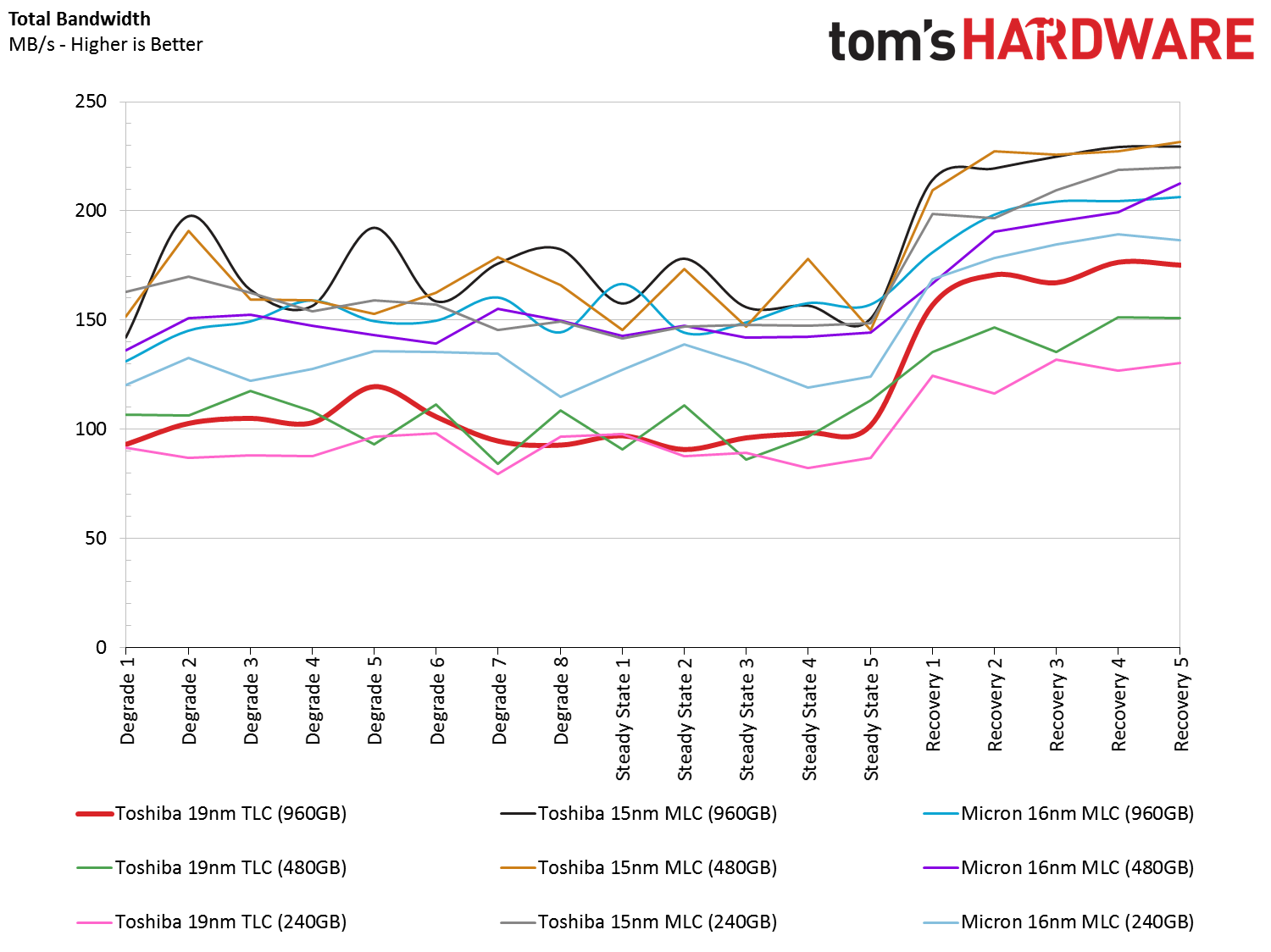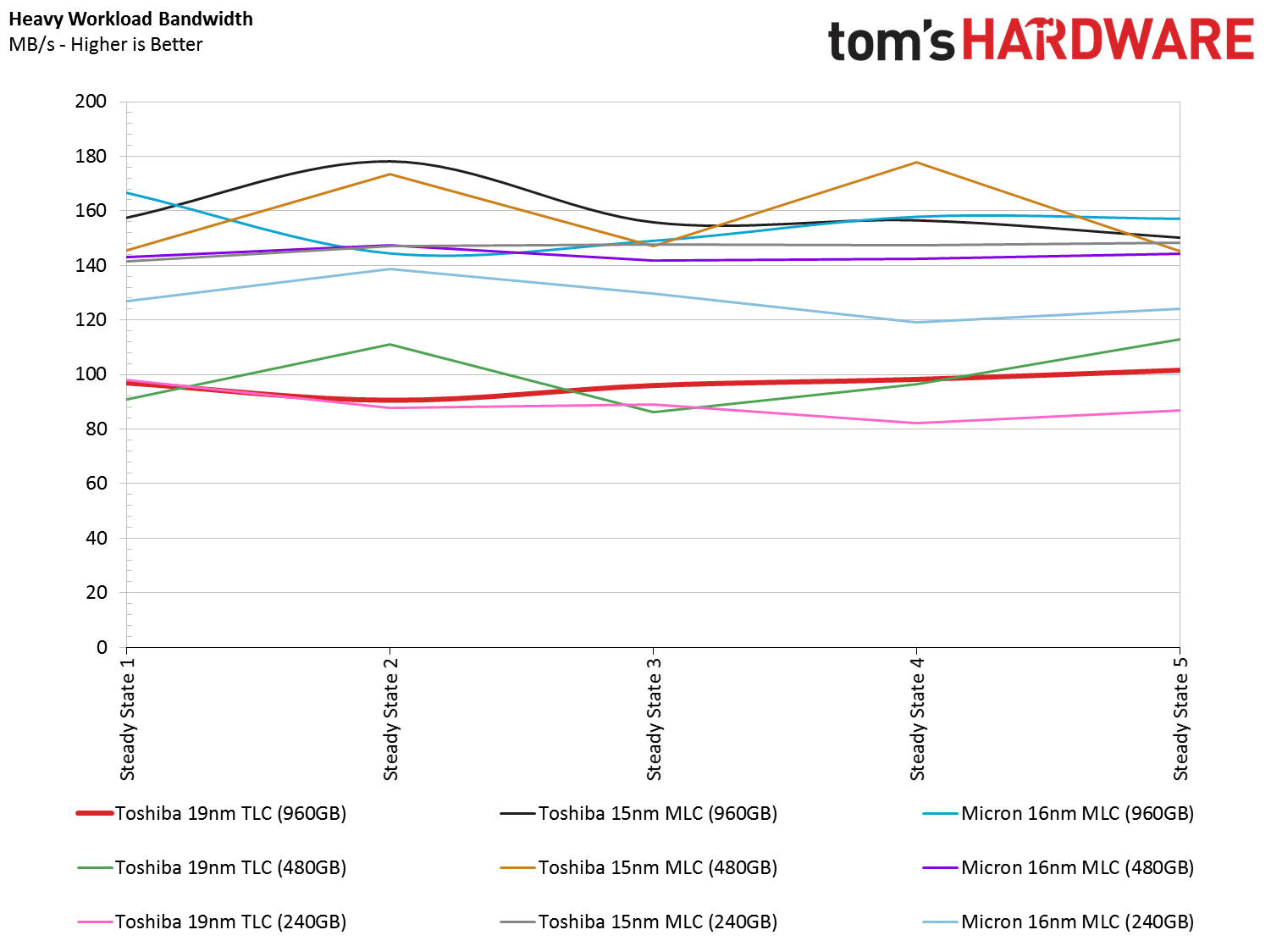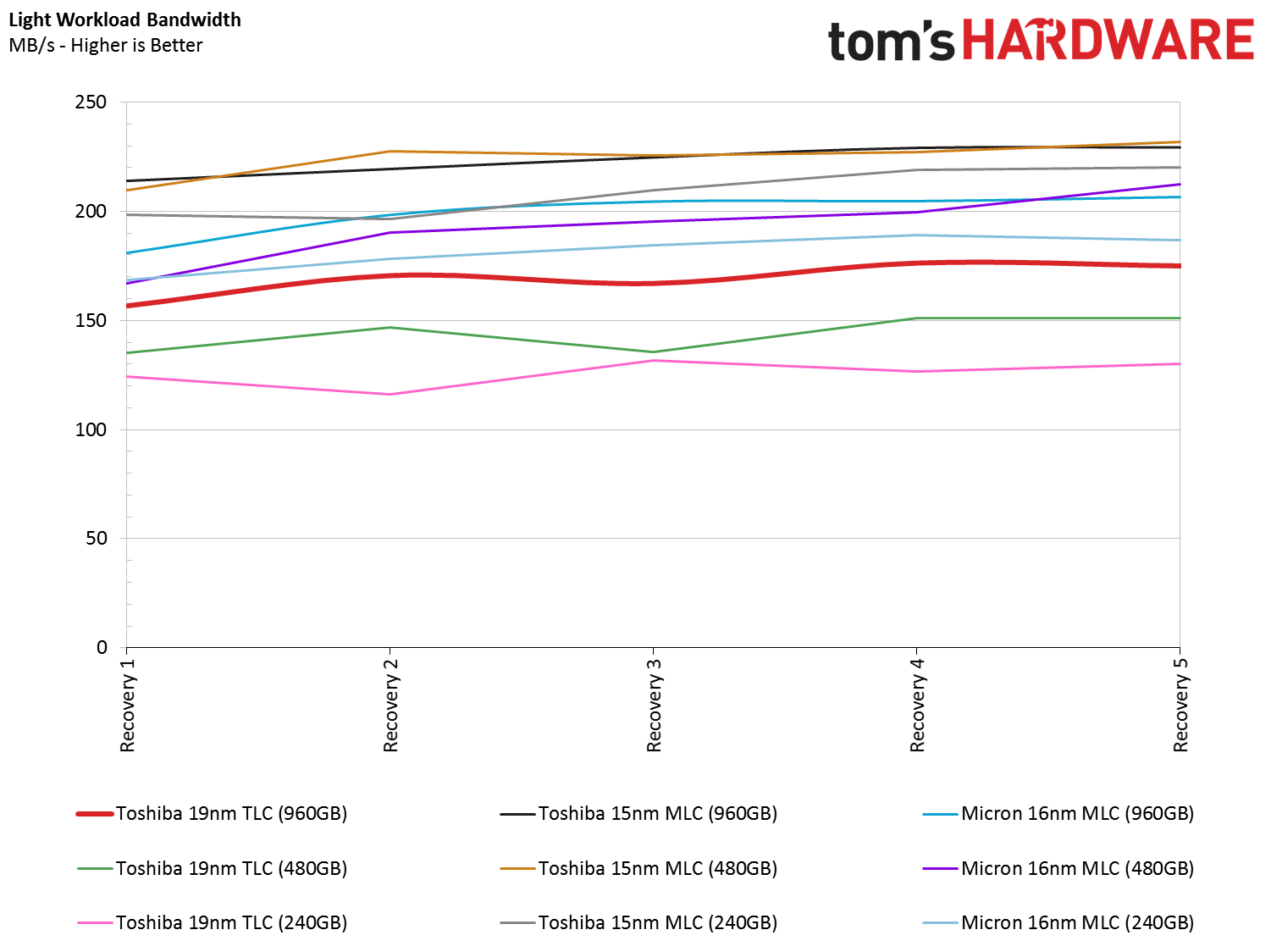Phison S10: Toshiba MLC And TLC Versus Micron L95B MLC
Features
By
Chris Ramseyer
published
Phison offered to let us test its S10 controller with three flash types that will ship in 2015: Toshiba's A19 TLC, 15nm MLC and Micron L95B 16nm MLC.
Add us as a preferred source on Google
PCMark 8 Advanced Workload Performance
To learn how we test advanced workload performance, please click here.
Image 1 of 3



Under heavier workloads, MLC is still a better option though. It really comes down to the workload you're running. In a more demanding test, the emulated SLC buffer can't flush fast enough to the flash that writes steady state sequential data at roughly 100 MB/s.
Stay On the Cutting Edge: Get the Tom's Hardware Newsletter
Get Tom's Hardware's best news and in-depth reviews, straight to your inbox.
Current page: PCMark 8 Advanced Workload Performance
Prev Page Total Storage Bandwidth Next Page Latency Tests
Contributor
Chris Ramseyer was a senior contributing editor for Tom's Hardware. He tested and reviewed consumer storage.
4 Comments
Comment from the forums
-
James Mason Replywhoa, where did you guys get some 4800GB just for the battery life tests?
Yeah so many typos I almost thought they actually did get 5 terabyte SSDs somehow.
-
Frozen Fractal I was arranging a chart while reading this article to see who actually wins. Seems like Toshiba 15nm MLC wins the test, with Micron 16nm MLC close on tail and TLCs wayyyy off :D.Reply
It is kinda disappointing to see TLCs being outperformed so brutally. I guess increased SLC buffer should mitigate the problem? Samsung already has like this in the EVO 2TB so what do you think Chris?
Also, does lithography has anything to do with performance? I mean Micron's NANDs are close to Toshiba's MLCs and Micron's cells are just 1nm bigger than Toshiba's MLCs. Can this be co-related somehow? -
WyomingKnott It is so cool that they provided these for a head-to-head comparison. Finally, a comparison with all other variables really held even.Reply